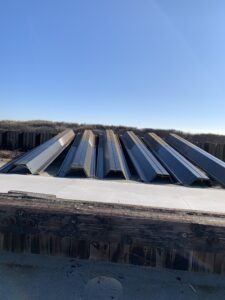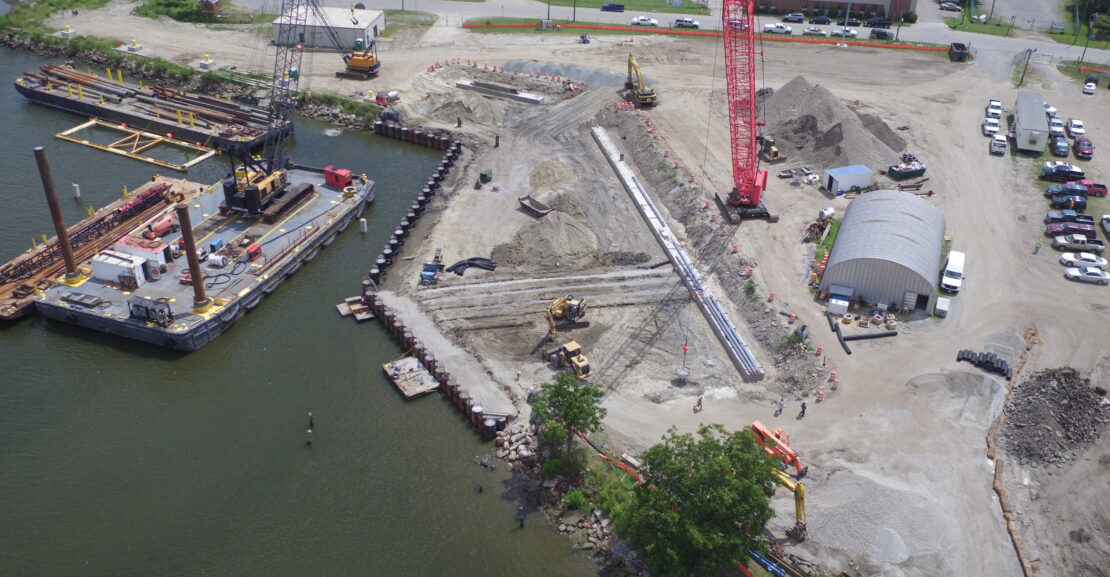Cathodic corrosion protection, also known as cathodic protection (CP), is a widely used technique to prevent corrosion in steel structures, including bulkheads. This method relies on the principle of electrochemistry to shield metal surfaces from corrosion, thus prolonging their service life and ensuring structural integrity. To understand how cathodic protection works, let’s delve into the underlying mechanisms and the various approaches used in protecting steel bulkheads.
Understanding Corrosion
Corrosion is a natural electrochemical process that occurs when metal surfaces react with environmental factors such as moisture, oxygen, and contaminants. In the case of steel bulkheads, exposure to seawater or moisture-laden atmospheres can accelerate corrosion, leading to structural deterioration and potential safety hazards.
Principles of Cathodic Protection
Cathodic protection works by shifting the electrochemical reactions occurring on the metal surface to a more favorable direction, thereby inhibiting corrosion. This is achieved by either supplying a direct electrical current to the structure (impressed current cathodic protection) or by using sacrificial anodes made of a more reactive metal (galvanic cathodic protection).
Impressed Current Cathodic Protection (ICCP)
 In ICCP systems, an external power source, typically a rectifier, is used to supply a controlled electrical current to the steel bulkhead. This current counteracts the natural corrosion process by polarizing the metal surface to a more negative potential, thereby preventing the oxidation reaction from occurring. ICCP systems offer precise control over the level of protection and are commonly used in large or complex structures.
In ICCP systems, an external power source, typically a rectifier, is used to supply a controlled electrical current to the steel bulkhead. This current counteracts the natural corrosion process by polarizing the metal surface to a more negative potential, thereby preventing the oxidation reaction from occurring. ICCP systems offer precise control over the level of protection and are commonly used in large or complex structures.
Galvanic Cathodic Protection
Galvanic cathodic protection relies on the principle of galvanic corrosion, where a more reactive metal (the sacrificial anode) corrodes preferentially to the protected steel structure. Zinc, aluminum, and magnesium are commonly used as sacrificial anode materials due to their higher electrochemical potential compared to steel. As the sacrificial anode corrodes, it releases electrons, which flow to the steel bulkhead, effectively protecting it from corrosion.
Application to Steel Bulkheads
In the marine industry, steel bulkheads are particularly vulnerable to corrosion due to prolonged exposure to seawater and aggressive marine environments. Cathodic protection systems are installed on bulkheads to mitigate corrosion and extend their service life. The choice between ICCP and galvanic cathodic protection depends on factors such as the size of the structure, environmental conditions, and project budget.
Installation and Maintenance
Proper installation and maintenance of cathodic protection systems are essential to ensure their effectiveness over time. Installation typically involves positioning anodes strategically on the steel bulkhead and connecting them to a power source or bonding them to the structure. Regular inspections and monitoring of system performance are crucial to identify any issues and address them promptly, ensuring continued protection against corrosion.
Conclusion
Cathodic corrosion protection is a proven and effective method for safeguarding steel bulkheads from corrosion in marine environments. By understanding the principles behind cathodic protection and the various techniques available, engineers and project managers can implement robust corrosion mitigation strategies, ensuring the longevity and reliability of critical infrastructure. With proper installation, monitoring, and maintenance, cathodic protection systems can provide long-term corrosion protection, preserving steel bulkheads and enhancing the safety and durability of marine structures.
Crane Lifting Capacity Explained
This article explores how cathodic corrosion protection shields steel bulkheads from corrosion using electrochemical principles. It employs impressed current or sacrificial anodes to prevent oxidation reactions on metal surfaces. In marine environments, where bulkheads are susceptible to corrosion from seawater exposure, cathodic protection systems are crucial. Proper installation and maintenance are essential to ensure long-term effectiveness, preserving structural integrity and extending the lifespan of critical marine infrastructure.
